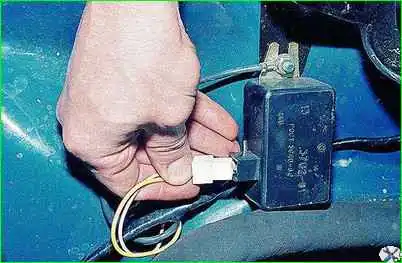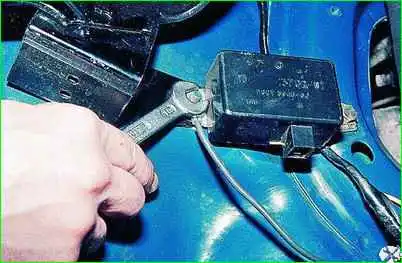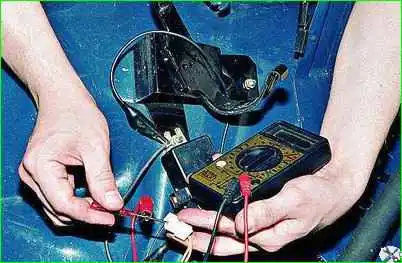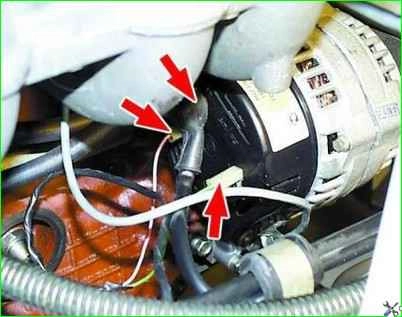Generators 1631.3701 or 192.3771 do not have a built-in voltage regulator and work in conjunction with a transistor voltage regulator type 13.3702–01, which has electronic protection against short circuits in the generator excitation winding circuit
The regulator provides battery charging voltage in the range of 13.4–14.7 V at a generator speed in the range of 2800–12,000 min –1, load 5–40 A and temperature from –20 up to +80°С.
At terminals “Ш” and “–” of the regulator, the voltage drop should be no more than 1.6 V at a current of 4 A in the generator excitation winding circuit and a temperature of 20 °C.
Checking the regulator
Before checking the voltage regulator, check the condition of the wires and the reliability of the connections between the generator, voltage regulator and battery.
It should be taken into account that the lack of charging current may be caused by the activation of the regulator protection in the event of a short circuit in the generator excitation winding circuit.
When the short circuit is eliminated, the operation of the voltage regulator is restored.
The voltage regulator can be checked at the mod. 532M or directly by car.
To check on a car, you need to have a DC voltmeter with a measurement limit of up to 20–30 V and a division value of 0.1–0.2 V.
Start the engine and, maintaining the engine speed within 1700–2000 min –1, turn on the low beam headlights. In this case, the charging current according to the ammeter should be no more than 10 A.
If the ammeter shows a charging current higher than 10 A, you must turn off the low beam headlights and turn on the side lights.
Measure the voltage at the “+” terminal of the battery, it should be in the range of 13.9–14.6 V at a regulator temperature of 20 °C.
If the voltage does not fall within these limits, then the voltage regulator is faulty and needs to be replaced.
Removing the voltage regulator
The voltage regulator type 13.3702–01 is secured with two bolts in the engine compartment on the mudguard of the right side member under the expansion tank.

With the ignition off, disconnect the block from the electrical connector of the regulator.

Using a 10mm wrench, loosen the nut of one and unscrew the bolt of the second regulator fastening.
Change the regulator, tighten the bolt, tighten the nut and connect the connector.
To check the generator excitation circuit, disconnect the connector from the voltage regulator, connect it to terminal “Ш” of the plug connector of the electrical wiring harness and the regulator body, connect a test lamp or voltmeter and turn on the ignition.

If there is no voltage (the lamp does not light), one of the following malfunctions is possible:
- - violation of contact of the excitation winding with slip rings; break of the excitation winding;
- - sticking of brushes in the channels of the brush holder;
- - burning, oxidation and severe wear of the rotor contact rings.
Replacing the ZMZ-4062 engine voltage regulator
The voltage regulator is combined with a brush holder and mounted on the back cover of the generator under a plastic casing.
You can replace the regulator without removing the generator from the car.
For ease of work, remove the washer reservoir and, unfastening the rubber belt, move the expansion tank to the side.

Disconnect the wires from the three generator terminals

Remove the back cover by releasing the three latches (shown on the removed generator)

Unscrew the two screws and remove the brush holder with the voltage regulator (shown on the removed generator)





